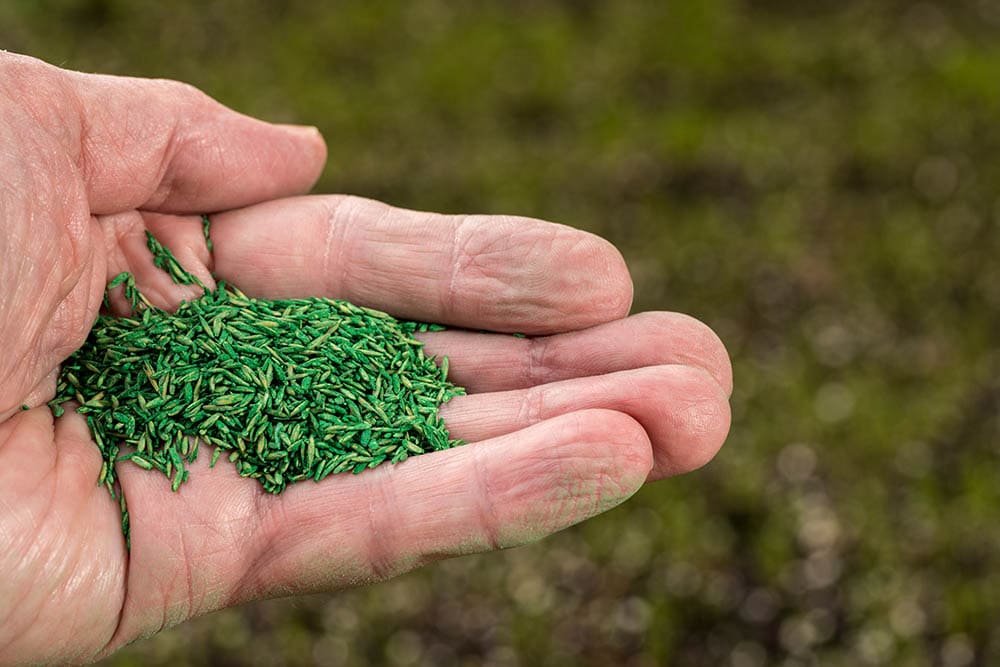How and When to Plant Grass Seeds: What You Need to Know
-
Pete Ortiz
- Last updated:

The best time to plant grass seeds depends on the grass. Cool-season grass should be planted in the fall, whereas spring is best for warm-season grasses. Once you determine the best time to plant the seeds, you will need to prepare the soil. Lay the seeds, and water the ground as the grass pops up.
Still, there is a lot more to know about how and when to plant grass seeds. For example, you might be confused about what is cool-season grass versus warm-season grass. To learn the difference between these grass types and more, scroll down.
When Is the Best Time to Plant Grass Seeds?
The best time to plant grass seeds ultimately depends on the grass type in question. Grasses are typically separated into two categories: cool-season and warm-season. You have to understand cool-season versus warm-season grass to understand the best time to plant the seeds.
Cool-Season Grass
Cool-season grass seeds germinate best whenever the soil is around 50°F–60°F. As a result, the temperature during the day should be between 60°F–75°F. More specifically, try to plant the seeds around 45 days before the first estimated fall frost. Some examples of cool-season grasses include Kentucky bluegrass, tall fescue, and perennial ryegrass.
Generally speaking, the further north you are, the more likely you are to encounter cool-season grass. States above Tennessee, Arkansas, Oklahoma, New Mexico, and Arizona typically see cool-season grass as a result.

Warm-Season Grasses
Warm-season grass seeds germinate best whenever the soil temperature is between 60°F–75°F, which corresponds to about 80°F during the day. These grasses are best planted in late spring to early summer as a result. Don’t plant warm-season grasses until there are no more chances of frost. Some of the most popular warm-season grasses include Bermuda grass, zoysia grass, bahiagrass, and centipede grass.
Warm-season grasses are normally found far south and cover states like Florida, Louisiana, Texas, New Mexico, and Arizona. If you continue further south than the US, you will find even more warm-season varieties.
Transition Zone
In the United States, there is a small strip considered the transition zone. The transition zone is an area where you can plant both cool-season and warm-season varieties. States in the transition zone include Oklahoma, Arkansas, Tennessee, and North Carolina, as well as parts of Alabama, Mississippi, Georgia, and South Carolina.
Why Timing Matters With Grass Seed
To many people, grass is grass. It might not make sense to put so much time, effort, and mental strain into deciding when the best time is to plant the seeds. However, timing matters quite a lot with grass seed.
It’s best to plant grass seeds whenever the grass naturally undergoes the most active growth. For cool-season grasses, these grasses grow most in the cool season. Planting them in the fall means that the seeds will take root and grow faster. The same is true for warm-season grasses in the spring.

What if I Don’t Know When to Plant My Grass?
If you don’t know when to plant your seed, it’s largely because you don’t know what kind of seed you have. If that’s the case, just look up if the grass seed you have is cool or warm-season grass. You should be able to easily find the information either on the packaging or online.
How to Plant Grass Seeds
Now that you know when to plant grass seeds based on grass type, let’s dig into how to plant grass seeds.
What You’ll Need
- Tiller device
- Fertilizer
- Grass seed
- Protection (soil, mulch, or straw)
- Water
- Mower
- Weeder
Step-By-Step Instructions
- Till the ground about 3 inches deep. Remove any plods on the surface to create a finished grade.
- Add fertilizer to your soil so it is perfect for the type of grass you are planting.
- Sprinkle the grass seed over the affected area. Follow the directions on the packaging.
- Protect the seeds by covering them in a little bit of soil. Then, add a mulch, straw, or an erosion-control blanket to ensure the seeds don’t wash or blow away.
- Water frequently so that the seeds are moist. Follow the watering instructions based on the grass type.
- Begin mowing the grass once it reaches 2.5–3 inches tall. Control weeds as well.
Caring for Your Grass
Once your grass starts growing, you will need to maintain it through regular mowing and weed eating. Although it may sound odd, mowing the grass is essential for it to stay healthy. During the growing season, it’s best to mow the grass about once a week for it to remain healthy.
Final Thoughts
In short, when you should plant your grass seed depends on if you have cool-season or warm-season grass. Cool-season grass should be planted 45 days before the first estimated frost, whereas warm-season grass should be planted whenever there’s no more risk of frost in the spring.
Figuring out when to plant the grass is the hard part. Once you know that, planting the grass is pretty easy. For the most part, you just need to rake anything out of the way and sprinkle the grass on the ground. Add some protection from erosion, and the grass should be growing quickly.
Featured Image Credit: Steve Heap, Shutterstock
Contents




